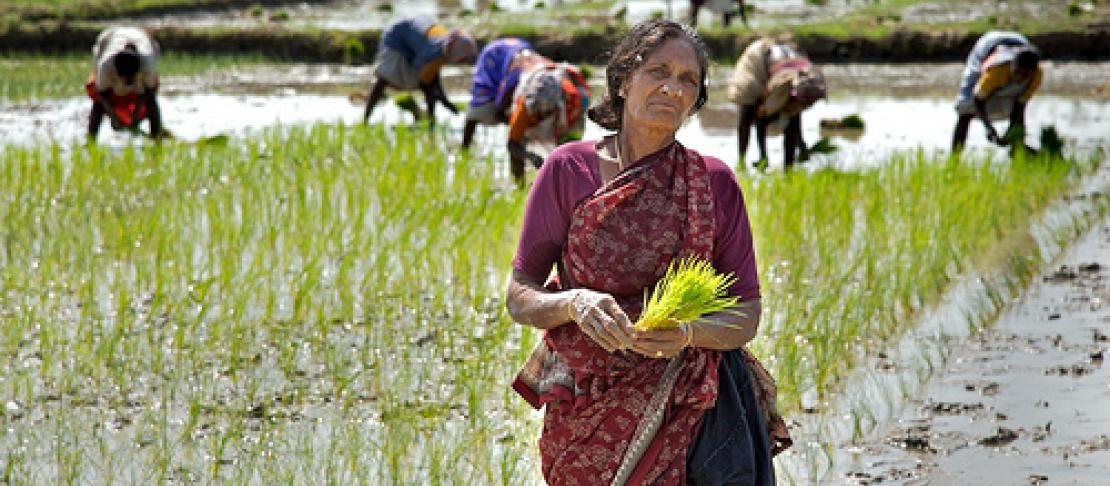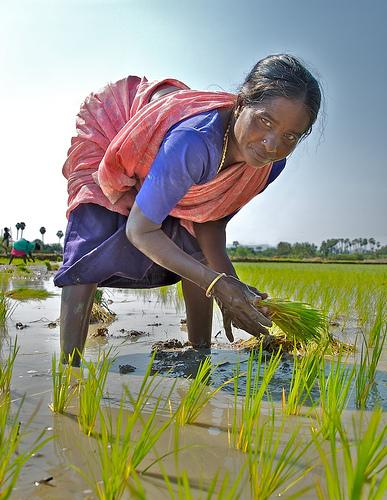Are there gender impacts from 'climate-smart' agriculture?

Women play an important role in food production, producing between 60 and 80 per cent of the food in most low-income countries. Agriculture interventions, considered ‘climate smart’, should therefore provide long-term benefits for women. In other words, when we look at the value and practicality of different approaches to climate smart agriculture, it is important to understand the gender aspects of their impact.
In South Asia, women are becoming increasingly important within agriculture, including earning incomes as well as providing labour, but the extent to which women participate in, and benefit from, agricultural changes varies from place to place.
The CGIAR Research Program on Climate Change, Agriculture and Food Security (CCAFS) and the International Food Policy Research Institute (IFPRI) are studying the financial, environmental and social feasibility of technological interventions in agriculture that can help farmers in South Asia become climate resilient.
The study focuses on two states in India, and shows how interventions have different costs and opportunities depending upon agro-ecological settings and climatic variability.
Climate-smart agricultural practices have the potential to increase farmers’ productivity and resilience, reduce or remove greenhouse gases, and enhance achievement of food security and development goals. The best technological innovations, management practices and interventions contribute both to climate change adaptation and mitigation.
Climate Smart Rice and gender differences in India
One state, Punjab, has highly fertile soil and is a leader in rice and wheat cultivation. The majority of farmers have irrigation systems and their land holdings are relatively large. In contrast, farmers in the other state, Bihar, are predominantly smallholders (<1 ha) and mainly depend on rainfall.

There are different gender implications related to climate-smart agriculture interventions. ThESE are being further investigated. M. Foley
While Punjab experiences heavy winter frosts, erratic rainfall during the rainy season and terminal heat stresses during wheat maturity which reduce seed production of wheat, Bihar faces flooding, drought and erratic rainfall. Compared to Punjab, Bihar appears to be more vulnerable to climate change.
Rice is a staple crop in India, so two ‘climate smart’ systems of rice production were compared to current practices: an improved system of rice intensification and directly seeded rice.
Initial results from Bihar show that rice intensification requires 69 percent more work from women than current practices, mainly in transplanting and harvesting the rice. On the other hand, directly seeded rice systems requires 70 per cent less work from women than current practices and 77 per cent less than system of rice intensification.
These results are very different from what was found in Punjab, where the rice intensification system required the same amount of work from women as current practices. This reflects the different roles women play in rice production in the two regions.
In the end, the prioritization of agricultural interventions to improve the climate resilience of farmers should consider the availability and prevailing wages of male and female workers, as well as the socio-cultural constraints that influence labour allocation and loads. For example directly seeded rice may be more successful in areas where labour is scarce and women have less time available for food production, while system of rice intensification will be more successful where labour is abundant.
Findings from CCAFS research in India are showing how important it is to consider economic- and social conditions when evaluating climate-smart agricultural interventions, particularly in terms of its impact on women’s participation in agriculture.
The full report from the study will be available at a later stage.
Learn more: CCAFS work on gender
This story was prepared by Christine Jost, Science Officer from Theme: Linking Knowledge with Action, Gopal Bhatta, who is a climate change consultant and Manon Verchot has been working as an intern with CCAFS in East Africa. Follow us on Twitter for the latest gender and agriculture stories: @Cgiarclimate



